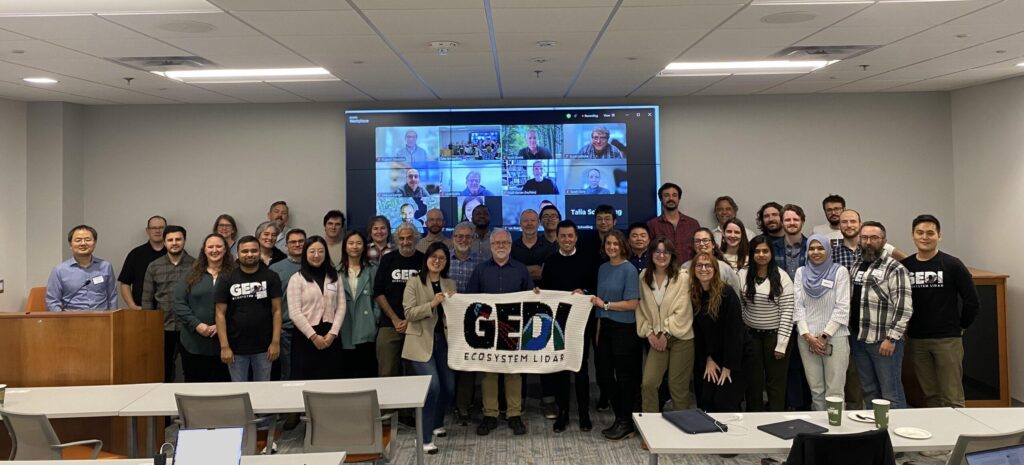The 2025 GEDI Science Team Meeting, hosted by NASA Science, convened leading researchers and experts to review the latest advancements and findings from the Global Ecosystem Dynamics Investigation (GEDI) mission. Focused on enhancing our understanding of Earth’s forests and their crucial role in the global carbon cycle, the meeting highlighted innovative data analyses, emerging methodologies, and collaborative efforts that promise to refine climate models and inform environmental policy. This article summarizes the key discussions and outcomes from the gathering, offering insights into how GEDI continues to transform planetary science and resource management.
Overview of Key Scientific Findings Presented at the 2025 GEDI Science Team Meeting
The 2025 GEDI Science Team Meeting showcased groundbreaking advances in forest structure mapping, carbon cycle analysis, and ecosystem dynamics. Researchers unveiled new insights into above-ground biomass estimation using the latest GEDI lidar datasets, revealing significant variations in global forest carbon stocks that challenge previous models. Emphasis was placed on the integration of GEDI data with other remote sensing platforms, enhancing the precision of habitat assessments and climate impact studies. Several teams also highlighted the role of GEDI in monitoring forest degradation and regrowth patterns, key to refining strategies for carbon mitigation and sustainable land management.
Key findings were categorized into critical thematic areas, reflecting the multidisciplinary nature of the GEDI mission:
- Carbon Dynamics: Improved quantification of carbon fluxes and sequestration across diverse biomes.
- Forest Structure: Enhanced vertical canopy metrics enabling unprecedented detail in forest canopy height and layering analysis.
- Global Monitoring Applications: Expanded use cases in wildfire impact assessment and tropical forest ecosystem monitoring.
- Data Synergy: Integration efforts combining GEDI with satellite optical and radar data to overcome cloud cover and complex terrain challenges.
| Scientific Area | Notable Advancement | Implication |
|---|---|---|
| Forest Carbon Stocks | Refined biomass models using lidar profiles | Better climate change predictions |
| Canopy Structure | Multi-layer canopy height differentiation | Improved habitat biodiversity assessments |
| Wildfire Monitoring | Real-time damage quantification | Enhanced disaster response planning |
In-Depth Analysis of Instrument Performance and Data Applications
The performance assessment of the GEDI instrument during the latest operational cycle highlighted significant advancements in data quality and longevity. Calibration efforts throughout 2025 enhanced waveform fidelity, enabling more precise measurements of forest canopy height and vertical structure. Notably, improvements in cloud detection algorithms have reduced data contamination by over 15%, resulting in a cleaner dataset for ecological and biomass studies. Instrument response stability was confirmed through continuous laser pulse analysis, confirming a less than 3% signal degradation since deployment, a factor critical to long-term vegetation monitoring.
Application of GEDI data has broadened beyond traditional forestry mapping, incorporating novel interdisciplinary research domains. Researchers are now leveraging the dataset for:
- Carbon cycle modeling: Improved biomass estimates refine global carbon flux predictions.
- Climate resilience studies: Tracking forest recovery post-disturbance events such as wildfires and storms.
- Urban green space planning: Enhanced 3D structure data aids city planners in maximizing canopy benefits.
These emerging applications validate GEDI’s growing role as a cornerstone in Earth system science.
| Instrument Metric | 2024 Baseline | 2025 Performance | Change (%) |
|---|---|---|---|
| Signal-to-Noise Ratio | 18.5 | 21.2 | +14.6 |
| Waveform Precision (m) | 1.2 | 0.9 | -25.0 |
| Cloud Rejection Rate | 78% | 90% | +15.4 |
| Laser Pulse Stability | 97% | 96.5% | -0.5 |
Strategic Recommendations for Future GEDI Mission Enhancements and Collaborations
Looking ahead, the GEDI Science Team emphasized the importance of expanding interdisciplinary collaborations to leverage emerging technologies and datasets. Prioritizing partnerships with international space agencies and climate research institutions will be critical in enhancing global forest biomass mapping and carbon stock assessments. The team advocates for fostering synergy between GEDI and complementary Earth observation missions, enabling improved resolution and temporal coverage that could dramatically refine ecosystem monitoring and predictive modeling.
Key strategic recommendations include:
- Integrating GEDI data with UAV and drone-based LiDAR surveys to validate spaceborne measurements at finer scales.
- Developing machine learning algorithms for enhanced data processing and forest structure classification.
- Expanding capacity-building efforts in underrepresented regions to boost local data analysis and application capabilities.
- Encouraging open data initiatives to foster broader community engagement and innovative research.
| Collaboration Focus | Desired Outcome | Action Timeline |
|---|---|---|
| International Space Agencies | Cross-calibrated forest biomass datasets | 2025-2027 |
| AI and Data Science Experts | Automated feature extraction & classification | 2025-2026 |
| Local Research Institutions | Improved regional ecosystem models | 2026-2028 |
Closing Remarks
As the 2025 GEDI Science Team Meeting concludes, the gathering has underscored the vital role of NASA’s Global Ecosystem Dynamics Investigation in advancing our understanding of Earth’s forests and carbon cycles. With collaborative efforts and cutting-edge research at the forefront, the team is well-positioned to further unlock insights that will inform climate science and environmental policy. Stakeholders and scientific communities alike await the next phase of GEDI’s mission, anticipating continued contributions to global ecological knowledge and sustainability efforts.
